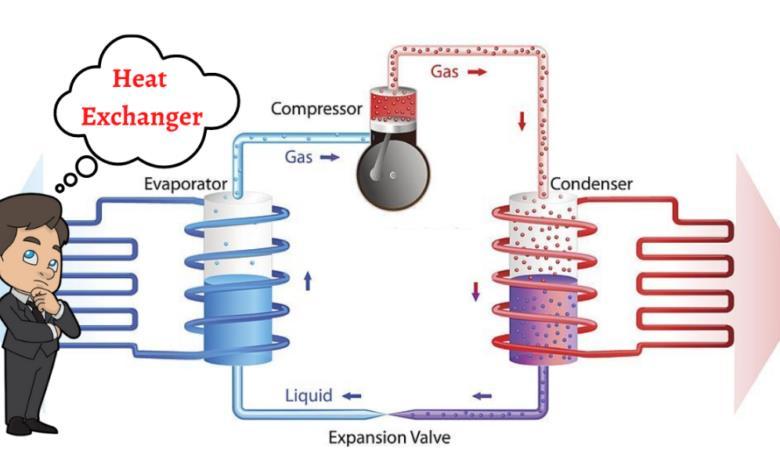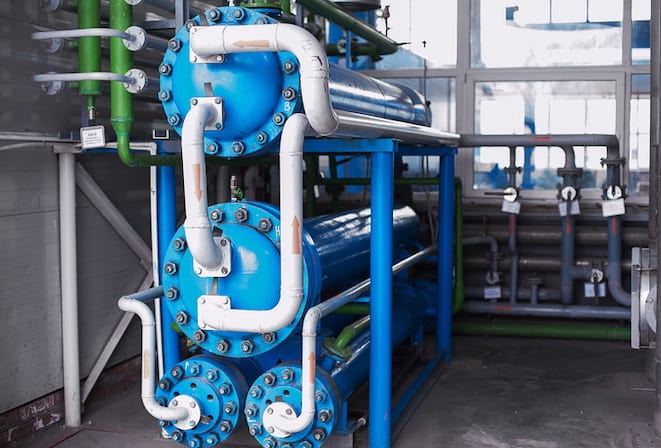Why DVS Heat Transfer Systems Are Reshaping Energy Efficiency in Industrial Cooling
A Comprehensive Overview to Picking the Right Heat Transfer Solutions for Your Needs
Selecting the ideal Heat transfer system is essential for functional efficiency. Different systems deal with various demands, influenced by aspects such as temperature level array and fluid kind. Understanding the concepts behind Heat transfer, such as transmission, convection, and radiation, is important. In addition, assessing power resources and upkeep practices can impact long-lasting efficiency. A closer examination of these considerations discloses just how to tailor a system to certain needs. What should one prioritize in this complex decision-making procedure?
Understanding Heat Transfer: Trick Ideas and Concepts
Although Heat transfer might look like a straightforward principle, it includes a variety of principles that are basic for reliable system layout. Recognizing these principles is important for engineers and developers who intend to optimize thermal performance in different applications. Transmission, for instance, involves the transfer of Heat with strong products, while convection refers to the movement of Heat within fluids. Radiation, one more essential principle, describes just how Heat can be moved with electromagnetic waves. Each of these systems plays a crucial role in identifying how power relocates within a system. By extensively understanding these ideas, specialists can make enlightened decisions, guaranteeing that Heat transfer systems operate efficiently and meet the certain demands of their applications
Types of Heat Transfer Equipments: A Summary
Comprehending the principles of Heat transfer prepares for exploring the various sorts of Heat transfer systems offered. Heat transfer systems can be classified mainly right into three kinds: conduction, radiation, and convection. Conduction entails Heat transfer via solid products, relying upon straight call in between bits. Convection, on the other hand, occurs in liquids (liquids and gases) where the movement of the fluid itself facilitates Heat transfer. Radiation entails the transfer of Heat via electro-magnetic waves and does not need a medium, enabling it to occur in a vacuum cleaner. Each kind of system has unique characteristics and applications, making it necessary for people and organizations to very carefully analyze their specific needs when picking one of the most ideal Heat transfer service.
Applications of Heat Transfer Systems in Different Industries
Heat transfer systems play an essential duty throughout numerous industries, impacting effectiveness and item quality. In industrial manufacturing processes, they promote accurate temperature control, while in food and beverage handling, they assure safety and security and preservation. In addition, cooling and heating and environment control systems count heavily on efficient Heat transfer to preserve comfy atmospheres.
Industrial Manufacturing Processes

Countless industrial manufacturing procedures depend heavily on reliable Heat transfer systems to maximize performance and enhance product top quality. In industries such as metalworking, Heat exchangers play a necessary function in preserving ideal temperatures throughout welding, spreading, and building. These systems assure uniform Heat distribution, which is essential for achieving desired product buildings. In the chemical manufacturing sector, Heat transfer systems assist in exact temperature level control during responses, influencing return and security. Moreover, in textile manufacturing, effective Heat administration is very important for coloring and ending up procedures, affecting shade consistency and material quality. By choosing suitable Heat transfer technologies, suppliers can boost energy performance and minimize functional costs, inevitably causing a much more lasting and affordable manufacturing atmosphere.
Food and Beverage Processing
Efficient Heat transfer systems are similarly crucial in the food and beverage processing market, where preserving perfect temperatures is important for food safety and security and high quality. These systems play an essential function in processes such as pasteurization, cooking, and sterilization, making sure that items are safe for intake and preserve their nutritional value. Heat exchangers, for example, successfully move Heat between fluids, maximizing energy usage while minimizing temperature changes. Furthermore, refrigeration systems are basic for extending and preserving subject to spoiling items shelf life. The selection of Heat transfer modern technology directly affects functional performance and product stability, making it essential for food and beverage manufacturers to pick the appropriate systems tailored to their details handling requirements. This careful choice inevitably adds to customer complete satisfaction and food security.

HVAC and Environment Control
While lots of industries depend on Heat transfer systems for efficiency, HVAC (Home Heating, Air Flow, and Cooling) plays a vital role in maintaining interior environment control across various setups. These systems utilize Heat transfer principles to control temperature, humidity, and air top quality, guaranteeing comfort and safety in household, business, and commercial atmospheres. Properly developed a/c systems improve power performance, reduce operational expenses, and reduce ecological influence. In commercial structures, for instance, reliable climate control contributes to staff member performance and consumer contentment. In commercial applications, HVAC systems help preserve perfect conditions for equipment operation and product preservation. Picking the right Heat transfer system is essential for conference certain climate control demands and achieving general system efficiency.
Evaluating Energy Sources for Heat Transfer Systems
In assessing power resources for Heat transfer systems, a comparison of renewable power choices and nonrenewable fuel source factors to consider is important. Sustainable resources, such as solar and wind, offer sustainable alternatives that can lower environmental effect. On the other hand, nonrenewable fuel sources continue to be prevalent as a result of their well established facilities and energy thickness, prompting a mindful evaluation of both alternatives.
Renewable Power Options

Fossil Gas Factors To Consider
Assessing fossil gas considerations is crucial for the performance and sustainability of Heat transfer systems. Nonrenewable fuel sources, such as natural gas, oil, and coal, are typical power sources that offer substantial Heat result, making them prominent selections for commercial and domestic applications. Nevertheless, their ecological effect, consisting of greenhouse gas discharges and resource deficiency, elevates concerns. When selecting a warmth transfer system, it is vital to evaluate the schedule, expense, and governing elements related to these gas. In addition, the effectiveness of fossil gas systems have to be considered, as greater performance can reduce some go now ecological drawbacks. Eventually, a well balanced strategy weighing performance and sustainability can lead decision-makers toward one of the most suitable Heat transfer service for their details requirements.
Variables to Consider When Selecting a Heat Transfer System
Choosing an appropriate Heat transfer system calls for mindful factor to consider of different factors that can substantially affect efficiency and performance. One essential factor is the operating temperature range, which determines the materials and design suitable for the application. Additionally, the type of fluid made use of in the system-- whether gas or fluid-- impacts Heat transfer efficiency and compatibility. The system's size and capability should line up with the particular demands of the procedure to avoid inefficiencies. Power resource availability is also vital, affecting operating expense and sustainability. The setup atmosphere, including space restraints and access for upkeep, plays a significant function in system selection. Regulatory conformity and security standards should be considered to guarantee the system fulfills all legal needs.
Maintenance and Performance Optimization for Heat Transfer Solutions
Preserving Heat transfer systems is essential for making certain optimal efficiency and durability. Routine upkeep activities, such as cleaning up Heat exchangers and checking insulation, help stop effectiveness losses because of fouling and thermal connecting. In addition, keeping track of system criteria, including stress and temperature, enables for early discovery of anomalies, decreasing downtime and costly repairs. Applying a preventive maintenance routine can maximize efficiency and expand the life-span of elements. Moreover, upgrading to advanced control systems can improve functional efficiency by getting used to differing problems and tons. By prioritizing maintenance and effectiveness optimization, operators can accomplish reduced power usage, reduced functional costs, and enhanced general system dependability, eventually bring about better source use and an extra lasting procedure.
Future Patterns in Heat Transfer Technologies
As sectors significantly prioritize sustainability and energy efficiency, future trends in Heat transfer modern technologies are readied to undertake substantial changes. Technologies such as advanced materials, consisting of carbon nanotubes and nanofluids, assure boosted thermal conductivity and effectiveness. Additionally, the integration of renewable power resources into Heat transfer systems is acquiring energy, advertising green options. Smart modern technologies, consisting of IoT sensors, are expected to reinvent surveillance and control, making it possible for real-time information analysis for optimized performance. The growth of modular and compact systems will certainly promote much easier setup and upkeep, catering to varied applications. These improvements show a change in the direction of more sustainable, effective, and adaptable Heat transfer solutions, lining up with global power objectives and ecological requirements.
Frequently Asked Questions
What Are the Ecological Impacts of Heat Transfer Solutions?
The environmental effects of Heat transfer systems can include greenhouse gas emissions, energy intake, and potential thermal contamination. Additionally, inappropriate disposal of materials and inadequacies can add to resource exhaustion and environment disruption.
How Do I Compute the Cost-Effectiveness of a Heat Transfer System?
To determine the cost-effectiveness of a warmth transfer system, one need to evaluate preliminary prices, operational costs, upkeep requirements, and power effectiveness, comparing these variables against the expected life expectancy and efficiency of the system.
Can Heat Transfer Systems Be Used in Residential Settings?
Heat transfer systems can undoubtedly be used in residential setups. They give efficient heating and cooling services, making homes a lot more comfy while potentially lowering energy prices. Their versatility permits different applications in property environments.
What Security Laws Put On Heat Transfer Solutions?
Safety and security laws for Heat transfer systems generally include guidelines on procedure, upkeep, and installment. Conformity with local building codes, maker specifications, and sector standards is important to assure reliable and safe system performance in various applications.
Just How Do Different Products Affect Heat Transfer Performance?

Conduction, for instance, entails the transfer of Heat with solid products, while convection refers to the activity of Heat within liquids. Understanding the concepts of Heat transfer lays the foundation for discovering the numerous kinds of Heat transfer systems find more info offered. Heat exchangers, for instance, efficiently transfer Heat this website in between liquids, enhancing power usage while minimizing temperature level variations. In reviewing power resources for Heat transfer systems, a contrast of eco-friendly power alternatives and fossil fuel factors to consider is important. Steels, such as copper and light weight aluminum, conduct Heat successfully, whereas insulators like rubber and glass slow down Heat circulation.